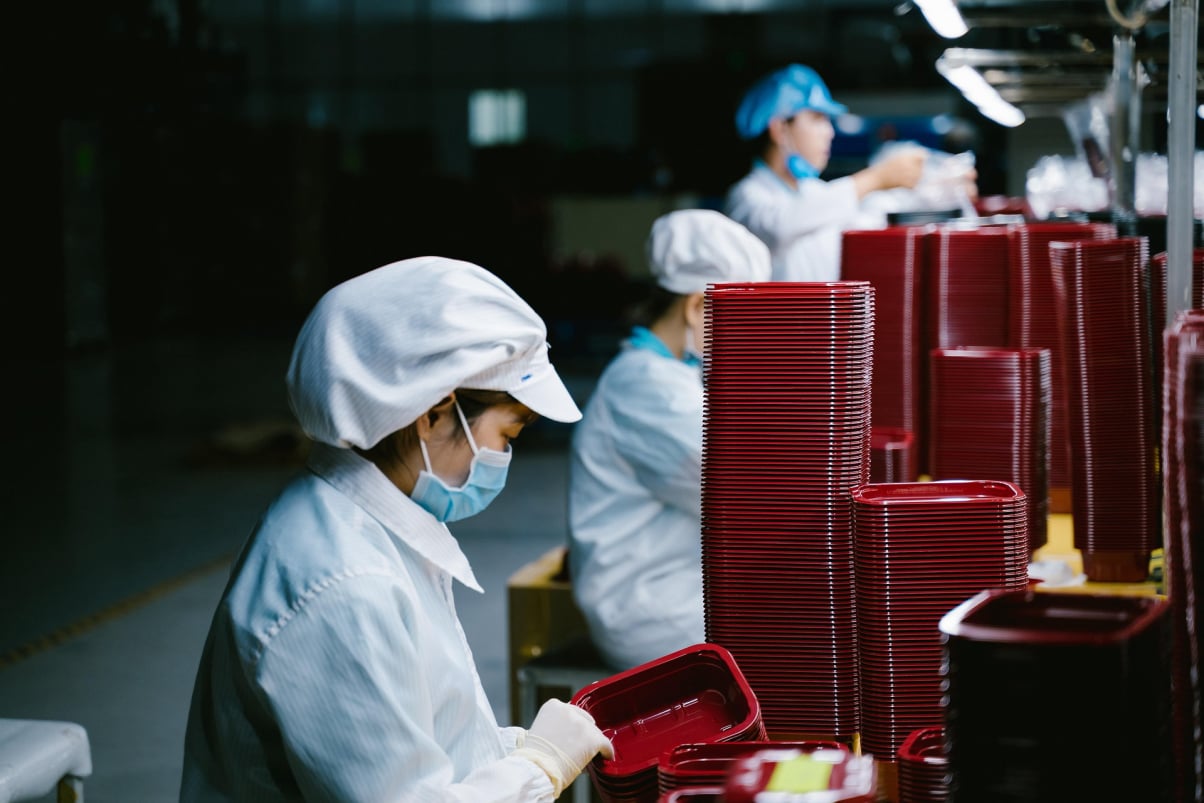
Stainless Steel Cladding for Food Processing Facilities: Best Practices
In food processing environments, hygiene, safety, and durability are everything. Every surface that comes into contact with food—or even shares the same environment—must be easy to clean, resistant to corrosion, and compliant with strict industry standards. That’s why stainless steel cladding has become the material of choice for walls, splashbacks, and production areas across the food industry.
When installed and maintained correctly, stainless steel cladding provides a seamless, hygienic barrier that prevents contamination, supports food safety compliance, and withstands years of intensive cleaning. This guide outlines the best practices for specifying, installing, and maintaining stainless steel cladding in food processing facilities.
1. Choose the Right Grade of Stainless Steel
Not all stainless steel is created equal. The environment within a food processing facility can expose cladding to moisture, acids, cleaning chemicals, and temperature fluctuations, so selecting the right grade is critical.
Grade 304 stainless steel is the most commonly used in food processing environments. It offers excellent corrosion resistance and is suitable for general use in kitchens, preparation areas, and packing rooms.
Grade 316 stainless steel, which includes molybdenum, provides enhanced protection against chlorides and harsh cleaning agents. It’s ideal for facilities processing salty, acidic, or high-moisture foods such as seafood, dairy, and sauces.
Choosing the correct grade ensures long-term durability, reduced maintenance, and ongoing hygiene compliance.
2. Ensure Smooth, Seamless Installation
Hygiene in food processing is all about eliminating potential contamination points. During installation, panels must be fitted tightly with minimal gaps or exposed joints. Any crevices can trap bacteria, dust, or food particles—posing a serious hygiene risk.
Best practices include:
Installing panels with flush joints and continuous stainless steel trims.
Sealing all edges, corners, and joints with food-safe, heat-resistant silicone sealant.
Using stainless steel fixings to prevent galvanic corrosion and rust staining.
Wherever possible, create smooth transitions between walls, ceilings, and work surfaces to support easy cleaning and sanitisation.
3. Maintain Proper Wall Preparation and Adhesion
Before installation, wall surfaces should be clean, flat, and structurally sound. Adhesives will not bond properly to dusty, greasy, or uneven substrates. Prepare walls by removing contaminants and repairing cracks or holes.
Use a high-strength, solvent-free adhesive suitable for stainless steel, applied evenly across the back of each panel. In areas subject to high heat or moisture, mechanical fixings can be added for extra stability.
Good preparation ensures panels sit flush, preventing air pockets that can harbour moisture and bacteria.
4. Incorporate Hygienic Design Principles
In food manufacturing, facility design plays a major role in maintaining hygiene. Stainless steel cladding works best when integrated into an overall hygienic design strategy.
This includes:
Coving wall-to-floor junctions to eliminate hard-to-clean corners.
Installing angled wall panels or trims above work surfaces to stop debris buildup.
Ensuring adequate ventilation and drainage, so condensation and washdown water do not collect on surfaces.
These design details enhance both cleanliness and efficiency during daily cleaning operations.
5. Regular Cleaning and Maintenance
Even though stainless steel is inherently hygienic, regular cleaning and maintenance are essential to preserve its properties. Residual food particles, oils, or cleaning agents can dull the finish or lead to surface corrosion if not properly managed.
Best cleaning practices:
Use warm water and a mild detergent or approved food-grade cleaner.
Avoid chloride-based chemicals (like bleach) that can damage stainless steel.
Always rinse thoroughly and dry after cleaning to prevent streaks and water spots.
Wipe in the direction of the grain to maintain a smooth, uniform finish.
For deep cleans, use dedicated stainless steel cleaning products that restore shine and reinforce the metal’s protective oxide layer.
6. Inspect Joints, Seals, and Fixings Regularly
Over time, high humidity and frequent cleaning can degrade silicone seals and loosen fittings. Inspect all joints, trims, and sealant lines as part of routine maintenance.
Replace any discoloured or cracked sealant with food-safe silicone to keep surfaces watertight and hygienic. Check for scratches or dents in panels, as these can trap bacteria and compromise hygiene standards. Prompt repairs help maintain compliance with HACCP and BRCGS standards.
7. Train Staff on Hygiene Protocols
A hygienic facility depends not only on high-quality materials but also on staff awareness. Train employees to recognise damage, avoid using abrasive cleaning tools, and report any maintenance issues immediately.
Simple measures such as using colour-coded cleaning equipment and dedicated stainless steel cleaning cloths can greatly reduce the risk of cross-contamination.
8. Prioritise Compliance and Documentation
Food safety authorities such as the Food Standards Agency (FSA) and international bodies like HACCP require that surfaces in food processing areas are durable, non-absorbent, and easy to sanitise. Stainless steel cladding fully meets these standards, but compliance also relies on consistent upkeep.
Maintain documentation of cleaning schedules, inspection reports, and material specifications. This demonstrates adherence to hygiene protocols during audits or regulatory inspections.
Conclusion
In food processing facilities, maintaining a hygienic and durable environment is non-negotiable. Stainless steel cladding provides the ideal surface—strong, smooth, and resistant to both bacteria and corrosion.
By choosing the right grade of stainless steel, ensuring seamless installation, and following regular maintenance best practices, food producers can create surfaces that not only meet but exceed hygiene and safety standards.
Investing in quality stainless steel cladding is more than a compliance measure—it’s a commitment to food safety, efficiency, and long-term performance.
